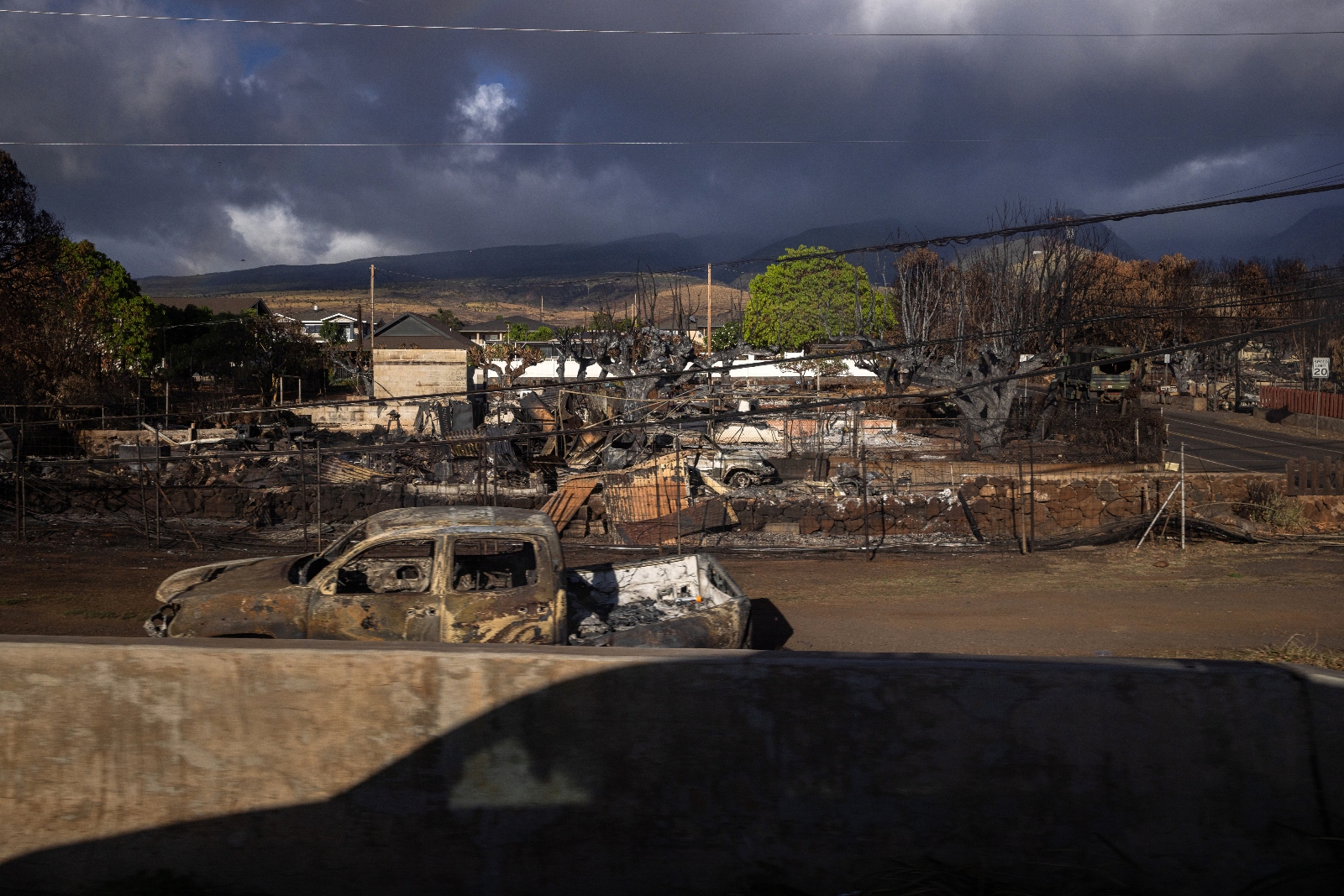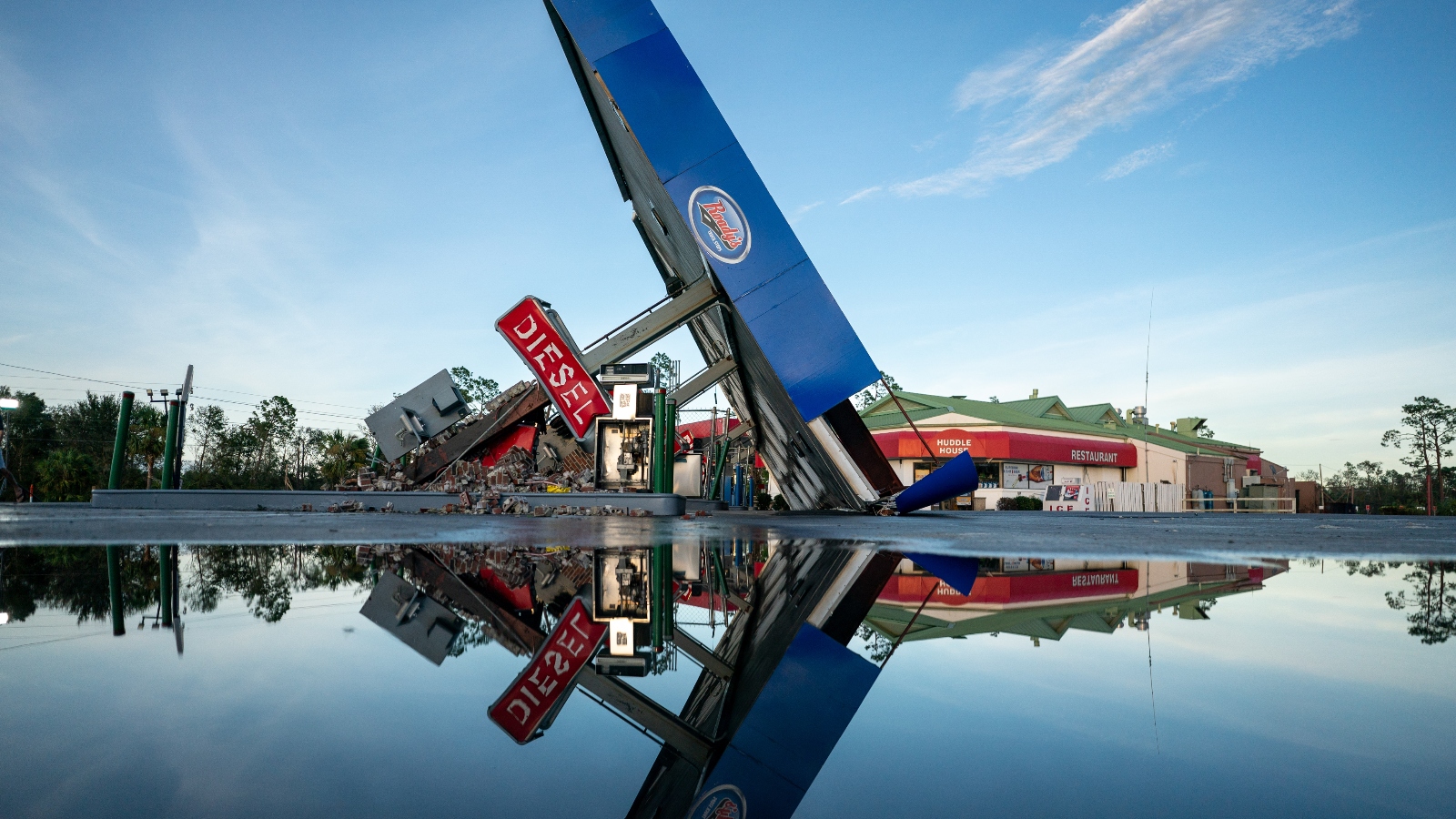It’s been a tough year for residents of Perry County, Kentucky, and the federal government isn’t making it much easier right now.
Raging flood waters ravaged the mountain county of 28,000 last year, sweeping away homes and killing at least three people. The underfunded local government has been able to recover only with help from Washington, which promised about $3.7 million to repair roads and buy out flooded homeowners.
Last month, after the county had spent $2 million of its own money on recovery efforts, County Judge Scott Alexander received a concerning letter from the Federal Emergency Management Agency, or FEMA. The agency was running low on money, the letter said, and it was pausing the reimbursements it had promised. Not only would the county not be paid back for its road repairs, it also wouldn’t receive money for home buyouts. The projects would be suspended until Congress gave FEMA more cash. That’s left homeowners in limbo, and the county with a fiscal hole that’s equivalent to 10 percent of its annual budget.
“It’s huge, and it’s crippled us right now,” Alexander, the county’s chief executive, said. “It really puts a hardship on us, and it will be hard for all smaller communities going forward. We want to do [the buyouts] as quickly as possible for the homeowners so they can get on with rebuilding their lives.”
Many, many more communities and homeowners face similar situations. Even as the nation veers toward the first government shutdown since late 2018, the Federal Emergency Management Agency is in a desperate financial state. Despite repeated requests for more funding, Congress has let the agency’s all-important disaster relief fund empty out, imperiling its ability to respond to devastating floods, fires, and other catastrophes.
As the agency tries to save cash, it has paused $2.8 billion in funding for thousands of disaster recovery projects across the country. A list of interrupted projects reviewed by Grist shows that the hiatus has affected everything from post-hurricane school construction in Florida to road repairs in Colorado, plus hundreds of millions of dollars in reimbursements for pandemic response.
If the looming government shutdown delays lawmakers’ efforts to pass legislation to fund the government, this suspension could last for weeks, straining the nation’s long-term recovery from last year’s Hurricane Ian and other past disasters.
“We’re talking about an agency that is understaffed, that’s dealing with a disaster declaration on average every three days, and now we’re in this dysfunctional state of Congress where they can’t seem to get done the basic job of refilling the Disaster Relief Fund,” said Shana Udvardy, a policy analyst at the Union of Concerned Scientists who studies disaster response. “It’s stressing communities who can’t actually implement these projects that have been in the tunnel for quite some time.”
The pot of money that FEMA uses to fund disaster relief has been running low for months as the agency fights a series of expensive climate disasters and the aftermath of the COVID-19 pandemic. Deanne Criswell, the agency’s top official, warned lawmakers as early as April that it might have to constrain disaster response efforts if Congress didn’t provide more money. FEMA often has to ask for additional funding during bad years, but lawmakers let the fund run dry this year as they bickered over whether to couple disaster spending with Ukraine aid.
“We’re seeing politics at its worst,” Udvardy told Grist.
A summer of heavy spending on disasters like the Maui wildfires brought the fund down to around $4 billion in August, leaving FEMA with just 20 percent of the money it had at the start of the year. Criswell on August 29 halted all spending except for “immediate needs,” which included response to new disasters such as the Maui fires and Hurricane Idalia. The agency says it has enough money left to carry it through October, but it’s one big disaster away from hitting zero.
According to the most recent rundown of funding cuts, the areas most impacted as of September 22 are Florida, Louisiana, and Puerto Rico, all of which have dealt with major hurricanes in recent years. FEMA has frozen more than $560 million in funding for Hurricane Ian recovery in Florida and almost $250 million in funding for Puerto Rico’s response to hurricanes Maria and Fiona.
While almost all the paused money supports long-term recovery, around $105 million in grants for climate resilience are also in jeopardy. These subsidies are designed to help communities prepare for future disasters. The suspended projects include a buyout program for flood-prone homes in Kentucky and a $4.7 million water infrastructure project in eastern Puerto Rico.
Two years ago, the remnants of Hurricane Ida flooded a public housing complex owned by the Englewood Housing Authority in Englewood, New Jersey. The inundation destroyed 22 of the building’s 150 apartments and the authority’s headquarters. The agency is now ready to begin repairs, and has cleared the permits necessary to do so, but can’t proceed until FEMA sends the $8 million it promised.
“Unfortunately, due to all the natural disasters throughout the U.S., FEMA needs to wait … to fund the rebuild,” said Samuel Lee, the commissioner of the housing authority. He said construction “will hopefully occur later this year.”

For some local governments without deep financial reserves, the funding pause has prompted a cash crisis. Municipal leaders in Garnett, Kansas, spent $3 million over the past year fixing an aging reservoir spillway, bolstering the town’s protection against heavy rains. The city expected to FEMA to cover the bill, but the money hasn’t arrived.
“The funding pause has caused some headaches here,” city manager Travis Wilson told Grist. “We have yet to see a reimbursement, my reserve is depleted, and I’m having to borrow from other utility reserves to continue to pay for the project. It truly is a domino effect.” A prior storm in 2019 caused significant damage to the reservoir spillway, and Wilson is worried about future flooding if the repairs don’t happen soon.
The Washington Post reported an earlier version of the list, which was accurate as of September 15. In a statement to Grist, FEMA said it could continue to provide emergency disaster aid and support victims of recent disasters. The agency also called on Congress to refill the relief fund.
The prospect of a government shutdown is bad enough for FEMA on its own. Craig Fugate, a former agency administrator under President Obama, told the Washington Post this week that shutdowns can hamper the agency’s coordination efforts and the government’s two-week closure in 2013 left him with a “skeleton crew.” The agency can still deploy emergency responders to floods and fires under such circumstances, for example, but its command center in Washington, DC shuts down, making nationwide communication and coordination almost impossible.
It will take a big infusion of money for FEMA to resume normal operations. According to the agency’s most recent report, it expects to end this month with just $556 million in the bank, down from $4 billion last month. The most recent stopgap funding bill under consideration in the Senate would give the agency only $6 billion in direct funding, which would likely only last for a few months.
In a statement on Thursday, the White House excoriated House Republicans for what it called financial brinkmanship, highlighting the delays that resulted from FEMA’s funding shortfall.
“Extreme House Republicans are playing partisan games with peoples’ lives,” the statement said, “including delaying long-term disaster recovery and undermining preparedness in communities across the country.”
Those partisan games have Michael Heinen, the CEO of the Jeff Davis Electrical Cooperative, pondering his next move. The co-op is erecting wind-resistant power lines to replace those that collapsed during hurricanes Laura and Delta in 2020, leaving customers to rely on generators. The work was possible only because the Federal Emergency Management Agency provided more than $30 million in grants to support the state’s hurricane recovery.
He already knew that money would be a little late in arriving; FEMA told him that weeks ago, saying it was pausing payments even though he’d already hired contractors, secured permits for the project and had enough money to start construction. With FEMA subsequently freezing funding, he isn’t sure what to do.
“It’s a concern, it’s one of those things that keep you up at night,” said Heinen. “It affects the timeline on trying to get that done, but I’m cautiously optimistic that it’s going to be temporary.”
Even so, he was caught off guard by the funding freeze — he hadn’t even heard which projects FEMA is suspending until Grist told him on Thursday.



